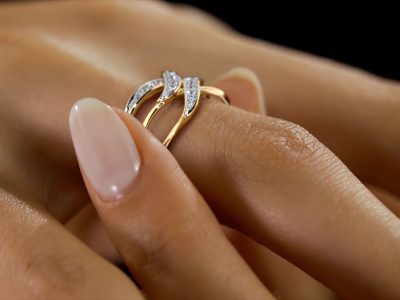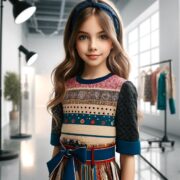Brilliant fashion patterns of India
With the finish of the twentieth century came the finish of all publicity which has established a more commonsense and down to earth climate and has given a more steady image of the fashion business.
During the 50s, 60s and 70s, the Indian fashion situation wasn’t precisely dismal. It was invigorating, classy and exceptionally smooth. There were no creators, models, star or fashion configuration names that the nation could flaunt. The worth of a piece of clothing was decided by its style and texture and not by who made it.
It was viewed as very stylish and fashionable to move toward any new designer, who could make a piece of clothing for a couple of rupees, giving the ideal fit, finish and style. The high society woman, who wore it, was glad for getting a decent deal and for giving her name to the final product.
In 60s, tight ‘kurtas’, ‘churidars’ and high hairstyles were a pattern among women. It was a period loaded with wickedness and festivity in expressions and music and film, appeared by freedom from limitation and acknowledgment of new kinds of materials like plastic film and covered polyester texture.
The 70s saw an expansion in the product of conventional materials outside the country as well as inside. Subsequently, global fashion showed up in India much before the MTV culture with the strong varieties, bloom prints and ringer bottoms. Engineered materials turned stylish and the disco culture impacted the fashion situation.
It was in the mid 80s when the main fashion store ‘Ravissant’ opened in Mumbai. Around then pieces of clothing were retailed for a four-figure sticker price. The ’80s was the time of reluctance and American architects like Calvin Klein became famous. In India as well, outlines turned out to be more manly and the ‘salwar kameez’ was planned with shoulder braces.
With the development of planner stores in Mumbai, the rich fashion configuration culture was a pattern among Indians alongside their weighty sticker prices. Presumably that a piece of clothing with a weighty sticker price was at the base phase of fashion. In any case, clients promptly changed into the high fashion overlap where they were persuaded that that the word ‘rich fashion configuration culture’ signifies, it needed to have a more exorbitant cost tag.
Articles of clothing were sold at mind blowing costs simply because the fashioners had chosen to get themselves seen by making pompous outfits and getting related with the right shows, VIPs and occasions.
Afterward, fashion shows moved to serious occasions each endeavoring to out-do the other in subject, list if people to attend and media inclusion. For any novice, the fashion business was the main expert craftsmanship that time.
In the 90’s, the last ten years of the thousand years, a move towards the exceptional matching down got back with ethnic wears (Today, ethnic wear market in India is accounted to Rs. 9000 crore). This prompted the decay and the downturn, the push to sell at any expense and continue to remain at the center of attention. With weighty merciless rivalry and sound attention to the client, the unavoidable happened. The sticker prices, which had once reached at a pinnacle, started their drawback process.
At those times the slump was not exclusively being knowledgeable about the sticker prices of the articles of clothing, yet in addition occupied with fashion shows. More models, choreographers, make-up men, hairdressers and originators gushed down into their business.
The tomfoolery and party time in the Indian fashion situation had not finished with this, yet proceeded. It was a point, where it came to at a specific consistent level and from that point, in the start of the 21st centaury, with new creators and models and some reasonable planning; the fashion publicity sped up its speed.
Indian fashion industry spreads its wings internationally
For the worldwide fashion industry, India is an extremely enormous exporter of textures and extras. From one side of the planet to the other, Indian ethnic plans and materials are considered as a huge feature for the fashion houses and piece of clothing makers. In textures, while obtaining for fashion wear, India likewise assumes a fundamental part as quite possibly of the greatest player in the worldwide fashion field.
India’s assets rely upon its practice, yet additionally on its unrefined substances. World over, India is the third biggest maker of cotton, the second biggest maker of silk and the fifth biggest maker of man-made filaments.
In the global market, the Indian piece of clothing and texture enterprises have numerous major perspectives that are consistent, as far as cost viability to deliver, unrefined substance, speedy change for selling, and a wide scopes of inclination in the plans in the articles of clothing like with sequin, beadwork, aari or chikkon weaving and so on, as well as less expensive gifted work force. India gives these fashion articles of clothing to the global fashion houses at serious costs with more limited lead time and a compelling imposing business model in plans which covers expounded hand weaving – acknowledged world over.
India has forever been considered as a default source in the weaved piece of clothing fragment, however the progressions of rupee against dollar has additionally diminished the costs, subsequently drawing in purchasers. So the worldwide fashion houses leave with redid stuff, and in the end made works are sold at exceptionally modest rates.
Taking everything into account, the reaches accessible in India can draw in as well as befuddle the purchaser. An essential critical assumption in the picking of textures is the current pattern in the global market. A large part of the creation errands happen in pieces of the modest community of Chapa in the Eastern territory of Bihar, a name one couldn’t ever have even known about. Here texture making is a family industry, the reaches and nature of crude silks produced here misrepresent the unrefined creation strategies and gear utilized tussars, matka silks, phaswas, and so on and they can plan it. Surat in Gujarat, is the provider of an astounding arrangement of jacquards, greenery crepes and georgette sheers – all textures used to make astonishing outlines requested world over. Another Indian texture plan that has been uncommonly intended for the fashion history is the “Madras check” initially used for the general “Lungi” a straightforward lower body wrap worn in Southern India, this item has now navigated its direction on to bandannas, shirts, home goods and practically anything one can imagine.
As of late numerous architects have begun utilizing customary Indian textures, plans and slices to improve their fashion assortments. Ethnic Indian plans with batik cravat, tie-and-color or vegetable block print is in India as well as the whole way across the world.
In India, people weaving is constantly connected with ladies. It is a method of their self articulation, and they cause plans that to portray their local culture, their religion and their longings. Ladies weave garments for their own utilization, and individuals connected with the peaceful calling plan weaved creature designs, enriching covers for horns and brows and the Rabaris of Kutch in Gujarat do the absolute best weaving. Weaved pieces are made during the celebrations and relationships, which are appliqué work called ‘Dharaniya’. One of the huge styles of Saurashtra is ‘Heer’ weaving, which has strong mathematical plans, woven on silks. The Mutwa ladies of the Banni area of Kutch have an entrancing weaving where they make fine weaving works with planned themes and mirrors in the size of pinheads, the Gracia jats utilize mathematical plans on the burden of long dresses. Additionally, the best of blankets with appliqué work are likewise made in Kutch.
Articles of clothing adornment with globule work is another region where it popular in the worldwide market. Globules are utilized to plan laurels and other extra things like belts and sacks and these examples now accessible for high fashion evening wear as well.
As per an overview, as of late Indian ladies have surrendered their customary sari for western wears like shirts and shorts, as they feel more good in skirts and pants rather than saris and salwar kameez. It’s been noticed that ladies spend just $165 million on pants and skirts against 1.74 billion bucks spent by men on pants. With additional ladies emerging to work, the (joined) marked pant and skirts market has been expanding at an incredible 27 percent in deals terms. Ladies feel that Western dress is more appropriate, especially while working or utilizing public transportation. Numerous corporate workplaces are additionally for their representatives wearing Western wear.
In India, Western motivation is expanding because of the impact of television and movies. Moreover, shopping centers selling marked garments have likewise expanded in India and are captivating the young people. As of late, originator wear is being advanced through store chains like Customer’s Stop, Pantaloons, Westside, and so on. Organizations, for example, Raymond and TCNS have additionally set up their selective stores for architect wear, for example, Be: and W.
The market of India fashion industry
As of late, a report expressed that the Indian fashion industry can build from its total assets of Rs 200 crore to Rs 1,000 crore in the following five to a decade. Right now, the overall creator wear market is measured at $35 billion, with a 9 percent development rate, with the Indian fashion industry making barely 0.1 percent of the global business’ total assets.
As per approximations, the all out clothing market in India is determined to be about Rs 20,000 crore. The marked clothing business sector’s size is almost one fourth of this or Rs 5,000 crore. Creator wear, thus, covers almost around 0.2 percent of the marked clothing market.
As of now, the biggest deals turnover inside the fashioner wear fragment is about Rs25 crore, with other notable names having less turnovers of Rs10-15 crore. Considering the possibilities of the Indian fashion industry for development, the figures are not extremely confident.
The figure of fashion industry
o The coordinated market for fashioner clothing is about Rs 250 crore
o Architect wear ascertains to under 1% of the attire












